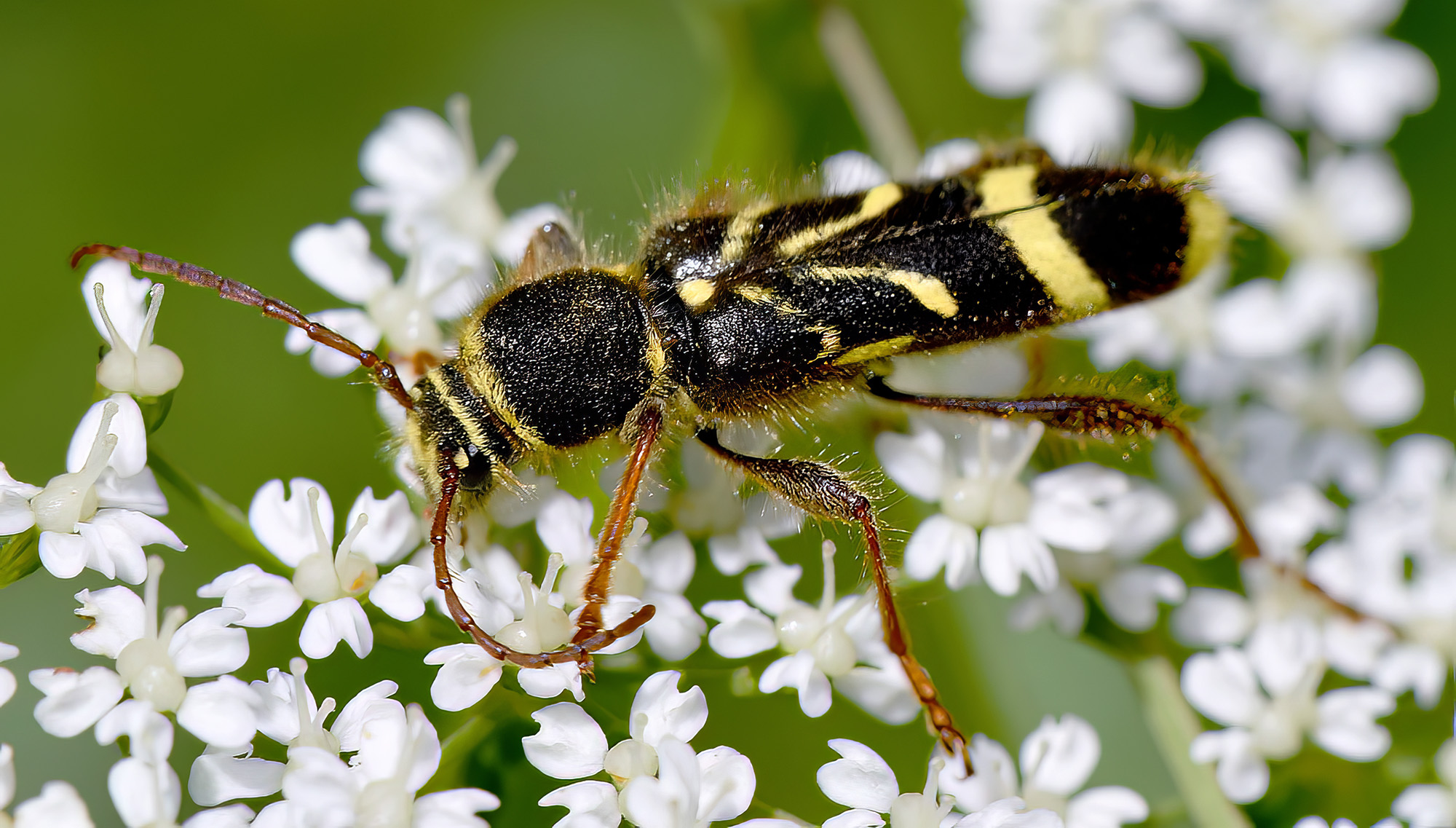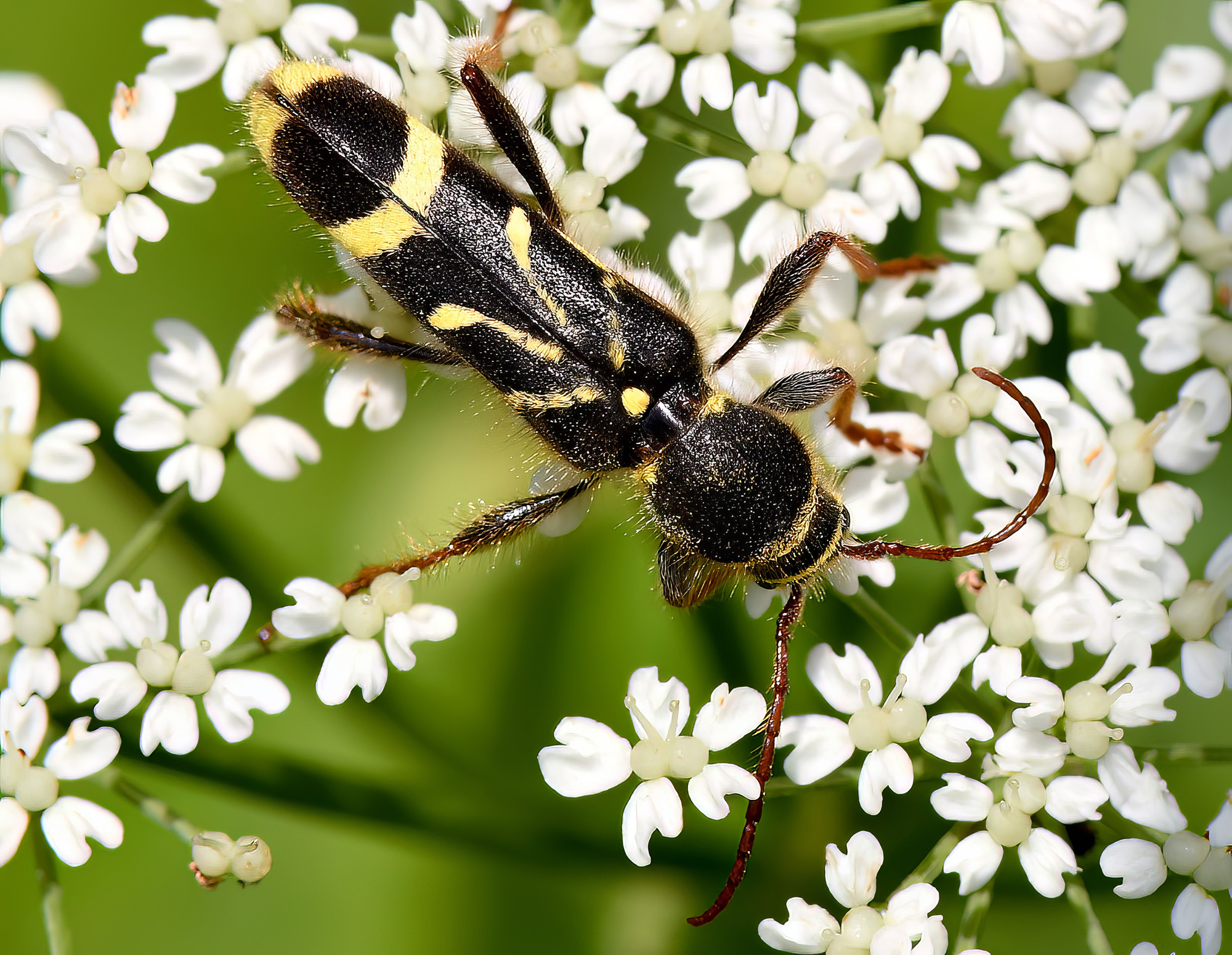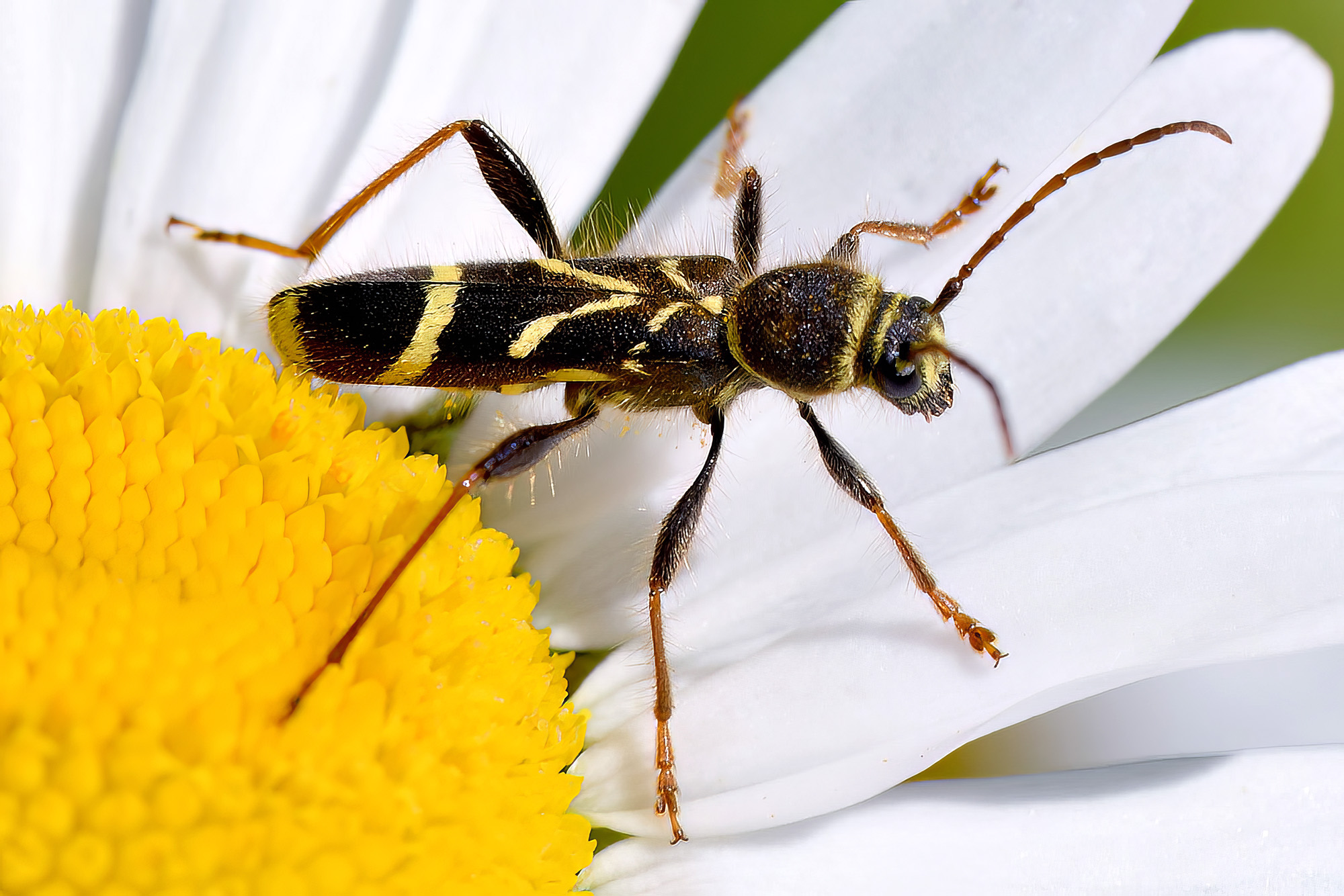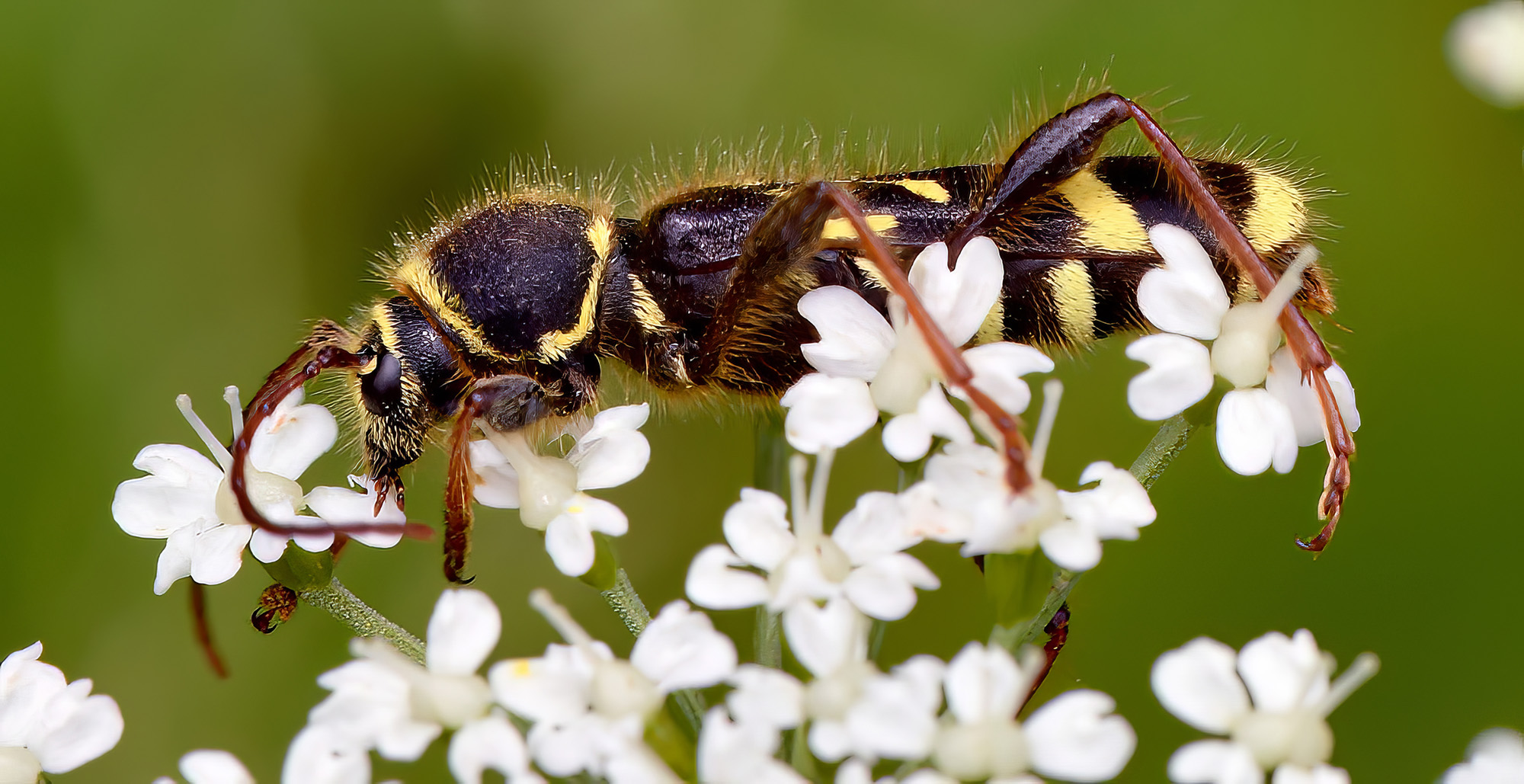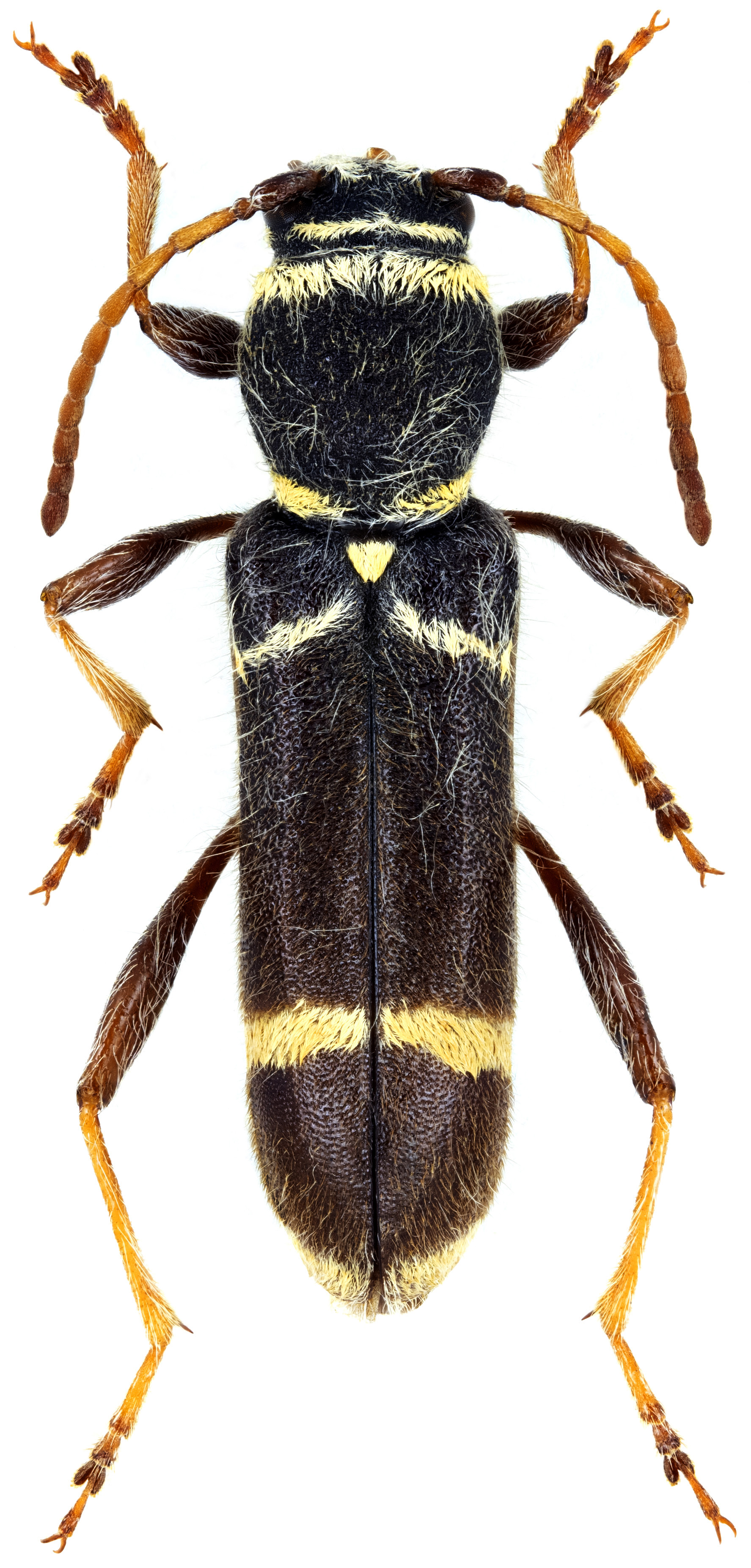
[Photo © David Navrátil, click on the picture for 4K resolution]
|
Cyrtoclytus capra, a widely distributed Euro-Asian submontane and montane forest species, has been described from Siberia as Callidium (Clytus) capra
by Ernst Friedrich Germar in 1823 [❖]. While this beautiful species is a very rare and sporadic in West and Central Europe, where the range of its host plants
seems to be very narrow (Acer, Alnus), it is very numerous in Siberia, where it develops in many deciduous trees, e.g. Betula, Quercus, Sorbus, Euonymus,
Tilia, Vitis and Aralia. C. capra larvae develop in dying or freshly dead branches and thinner trunks of the host trees.
The young larvae feed subcortically, creating transversal galleries impressed on alburnum filled with fine frass. They enter the wood and bore longitudinal straight or meandering,
sometimes transverse galleries at depth of 1.5 - 4.0 cm after the first overwintering. After the second overwintering larvae create pupal cells in the upper layer of wood an pupate (May - June).
Life cycle 2 years. Adults, active from June to August (peak in July), are diurnal and anthophilous (on Apiaceae, Rosaceae etc.) [✧][▽][✩].
| Body length: | 8 - 18 mm |
| Life cycle: | 2 years |
| Adults in: | June - August |
| Host plant: | polyphagous in deciduous trees (Alnus, Acer, Betula, Quercus, Sorbus, Euonymus, Tilia. Vitis, Aralia etc.) |
| Distribution: | Austria, Belarus, Bosnia and Herzegovina, Croatia, Czechia, Estonia, France, Germany, Latvia, Lithuania, Moldova, Poland, Romania, Serbia,
Slovakia, Switzerland, Ukraine, Russia (whole territory), Azerbaijan, Iran, Kazakhstan, Mongolia, China, Korea |
The living beetles in the pictures were photographed on flowers (Apiaceae) in Spišská Nová Ves-Novoveská Huta environs (Spišská Nová Ves district, Košice region, Slovakia) on June 24, 2017.
The mounted specimen (very rare aberration without central strip on elytra) has been collected on flowers (Apiaceae) in Klauzy dam environs (Slovenský ráj, Spišská Nová Ves district,
Košice region, Slovakia) on July 17, 1990.
Collected by Michal Hoskovec
[❖]
Germar E.F.:
Insectorum species novae aut minus cognitae, descriptionibus illustratae.
Coleopterorum Species. Hendelii et filii, Halae Volumen primum. Coleoptera: xxiv + 624pp, 1823.
[download  ] ]
[✧]
Karpiński L., Szczepański W.T., Plewa R., Walczak M., Hilszczański J., Kruszelnicki L., Łoś K., Jaworski T., Bidas M., Tarwacki G.:
New data on the distribution, biology and ecology of the longhorn beetles from the area of South and East Kazakhstan (Coleoptera, Cerambycidae)
ZooKeys 805: 59–126 (2018)
[download  ] ]
[▽]
Cherepanov A.I.:
Cerambycidae of Northern Asia, Volume 2 - Cerambycinae Part II.
Amerind Publishing, New Delhi: 354pp [pages 146-151], 1988.
[download  ] ]
[✩]
Sláma M.E.F.:
Tesaříkovití – Cerambycidae České republiky a Slovenské republiky / Cerambycidae of the Czech Republic and Slovak Republic.
Milan Sláma private printing, Krhanice, 383pp [pages 176-177], 1998 [ISBN: 80-238-2627-1].
[download  ] ]
|
